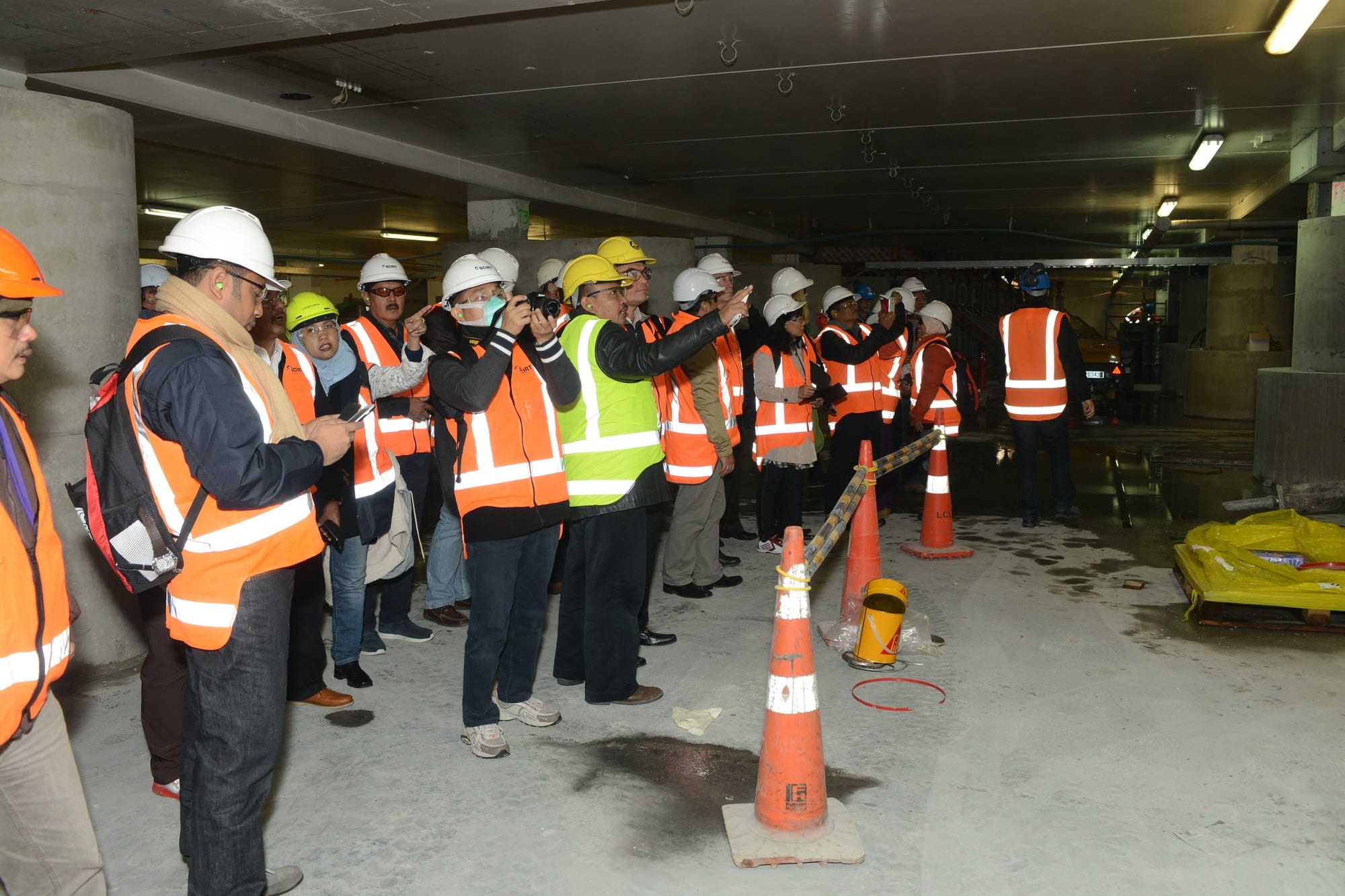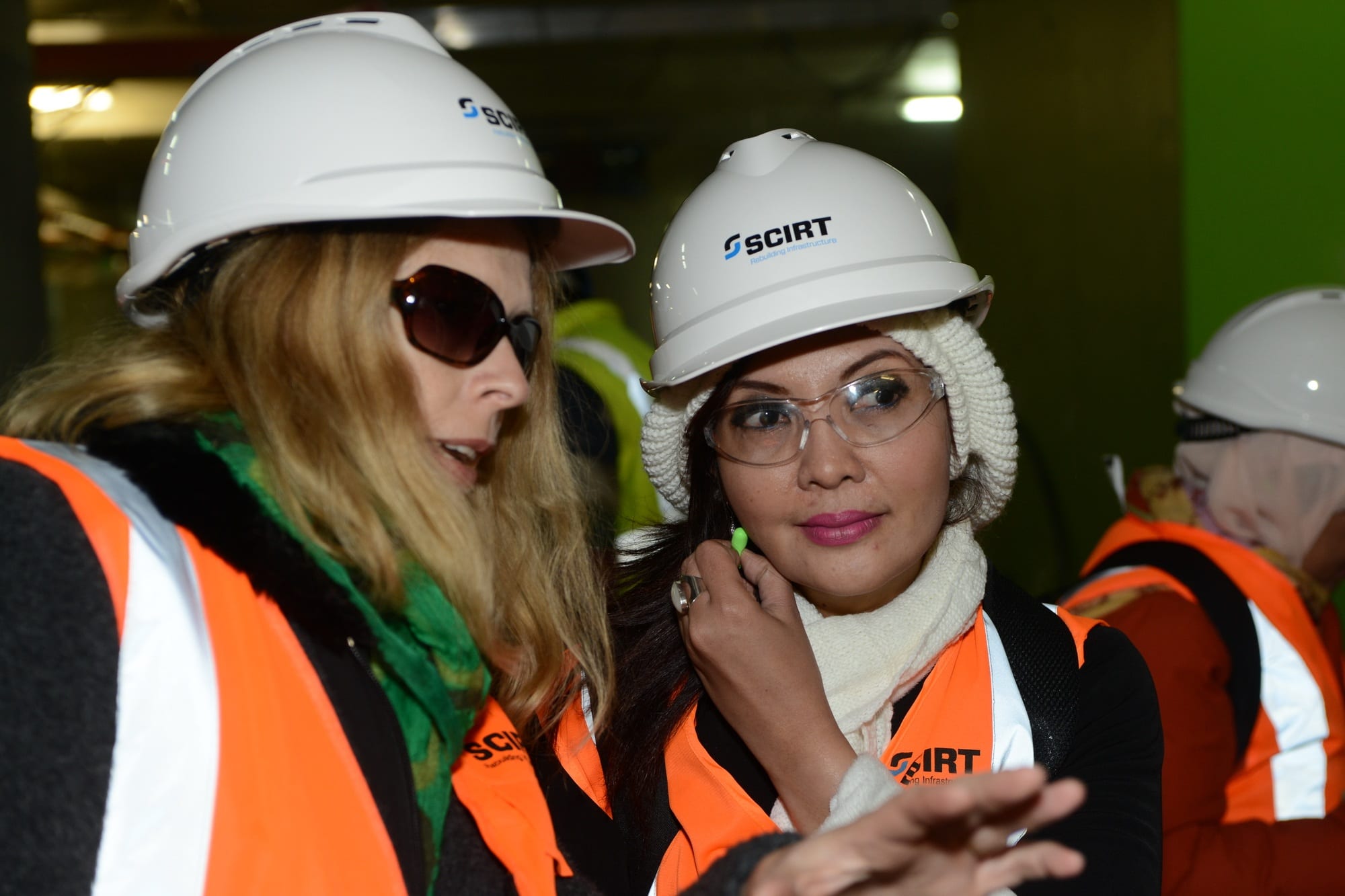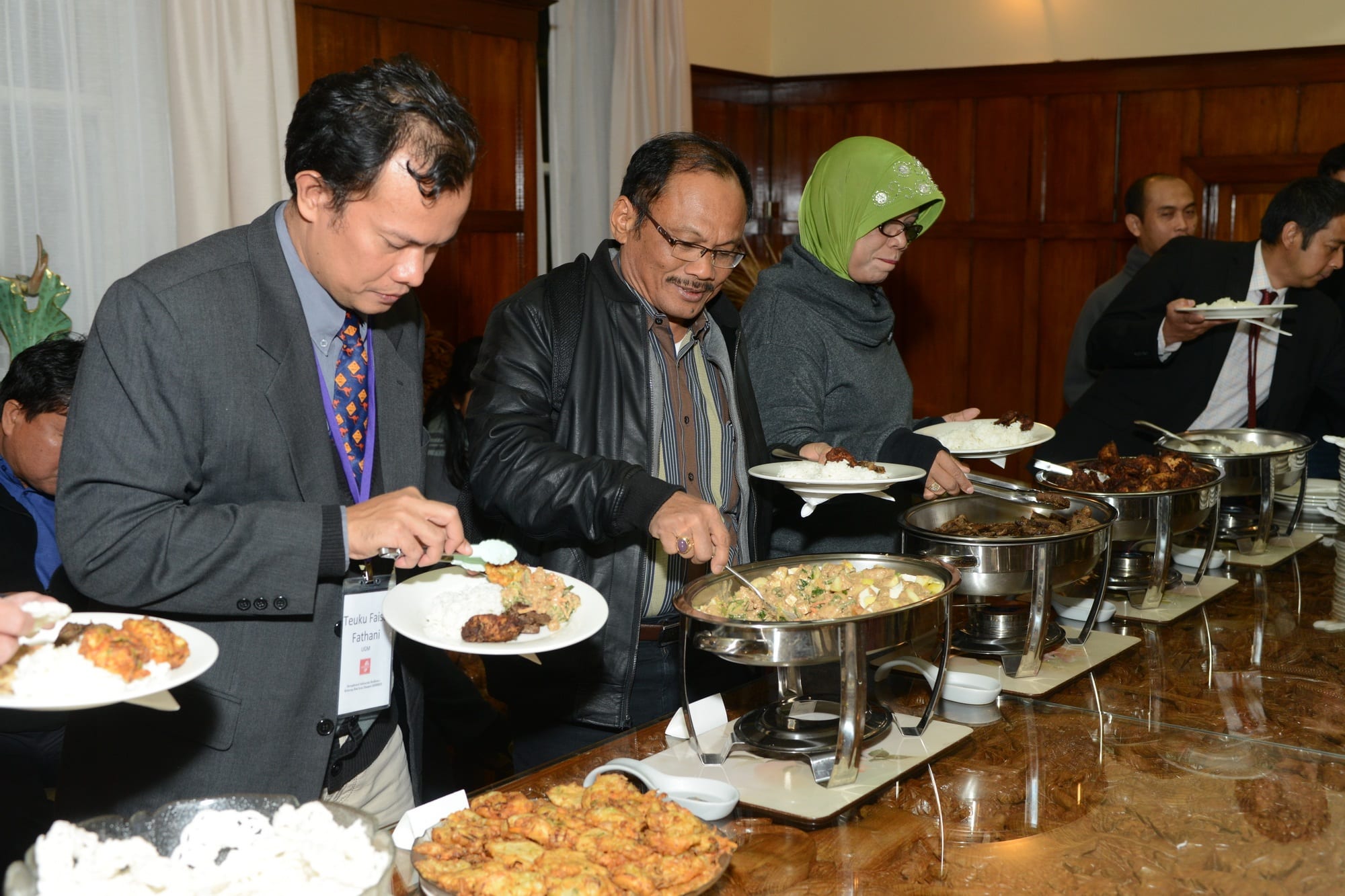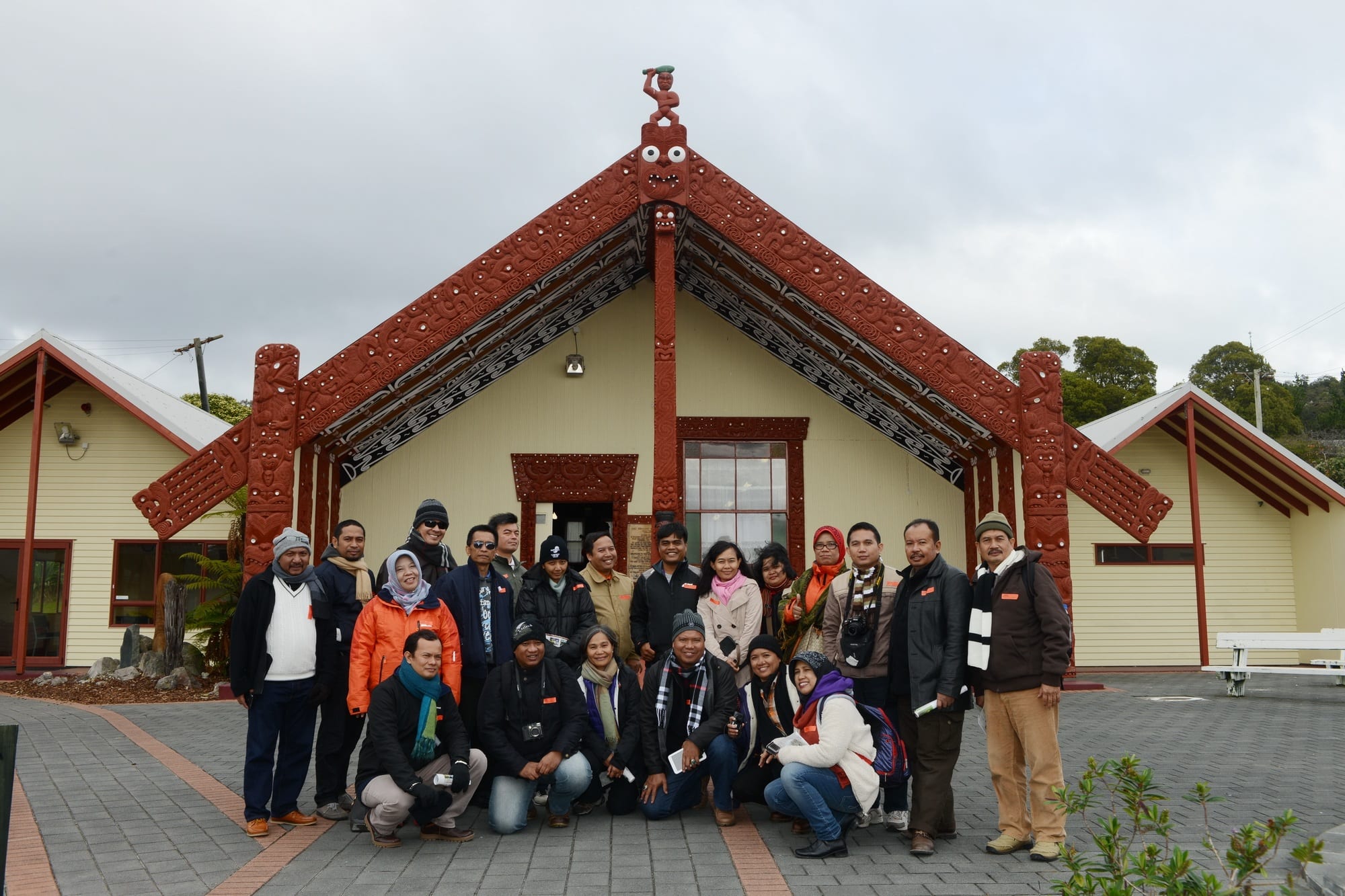The New Zealand StIRRRD team recently hosted a 27 strong delegation from Indonesia for a Comparative Study Tour of Disaster Risk Reduction. The delegation consisted of representatives from UGM, regional governments and parliaments from the four districts Pesisir Selatan, Bengkulu, Donggala and Mataram, central government representatives including the Director for Disaster Risk Reduction from the National Disaster Mitigation Agency, National Planning and the Ministry for Rural and Underdeveloped Regions and Transmigration. Partner universities, Universitas Andalas, Universitas Bengkulu, Universitas Tadulako, and Universitas Mataram, also attended. The delegation was led by UGM Vice-Rector for Cooperation and Alumni, Dr. Paripurna Sugarda and was accompanied by a translator, Zamira Tatapamang.


The study tour started in Christchurch with Powhiri welcoming the delegation to New Zealand and a welcome dinner. In Christchurch, the participants saw how New Zealand is rebuilding the city after the 2010 and 2011 earthquakes. Speakers included researchers from GNS Science, the Joint Centre for Disaster Research, the Earthquake Commission, Otago Regional Council, Environment Canterbury and the Canterbury CDEM group. A one-day field trip took in central Christchurch damage and reconstruction including visiting the retrofitting of the Christchurch Art Gallery, liquefaction-induced damage to land and homes in Bexley, coastal erosion and climate change scenarios in South Brighton, rockfall hazards in the Port Hills and damage to the Avon River stopbanks.
The study tour then moved to Wellington for more presentations from GNS Science, local and central government representatives, the private sector and the Lifelines Group. A field trip though the Wellington region took in an overview of the region from Mt Victoria, tsunami hazard at Island Bay including the Tsunami Blue Line and warning signs around the suburb, base isolation beneath Wellington Hospital, a walking tour around earthquake strengthened and earthquake prone buildings in central Wellington, and a visit to Parliament to see the base isolation there. The day finished with a visit to the Wellington Regional Emergency Management Office and a function hosted by BECA.


The Indonesian Embassy here in Wellington hosted the StIRRRD team and Indonesian visitors. We were entertained with traditional music from a gamelan orchestra. Megan Collins, a musicologist who has researched Indonesian Music, gave a speech about the significance of traditional songs that pass down knowledge of disasters and advice on how to be safe from them based on experience.
The study tour finished with a field trip to Taupo and Rotorua which is the subject of a separate blog.

